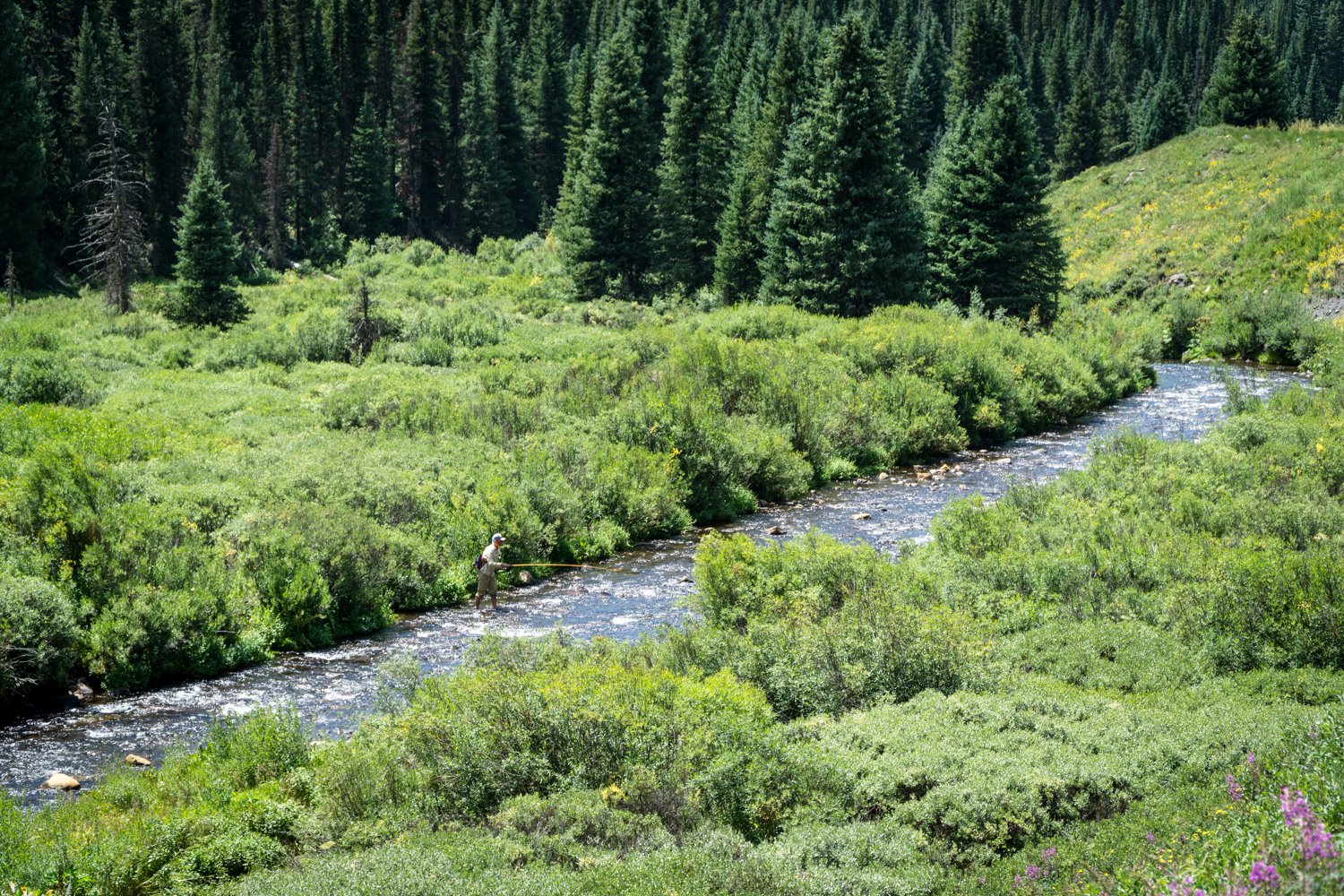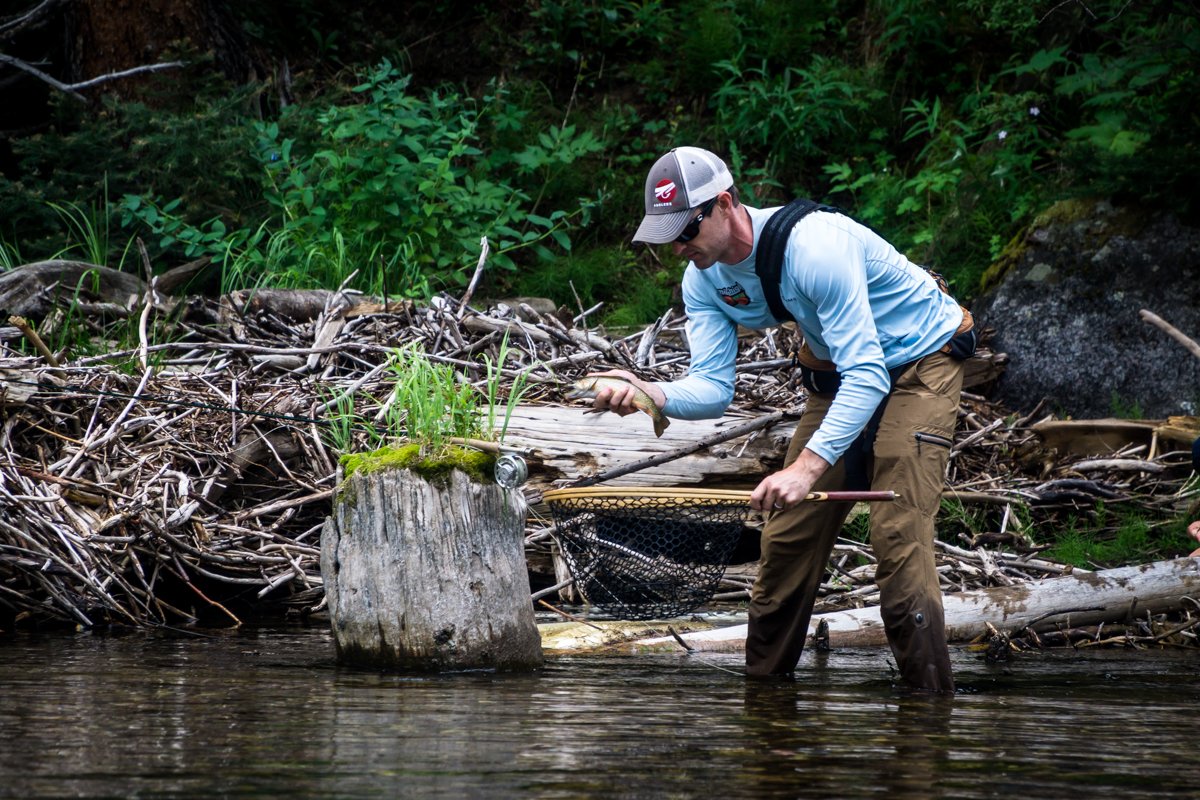3 Tips for Fishing Streamers in Small Wilderness Waters
When most anglers think of fishing small water, dry flies or maybe dry-dropper rigs come to mind. We all love watching a fish eat a dry fly. And there’s no doubt how effective a hopper-dropper rig can be. However, don’t rule out fishing streamers in small water.
On small creeks and rivers, just like here at the headwaters of the White River in northwest Colorado, many anglers might not even think of swinging a streamer. Yet every ecosystem has dominant fish. And in small waters specifically, the need to protect space and grab easy calories can create a perfect storm for non-stop action.
Whether it’s here in the Flat Tops Wilderness or anywhere else, the next time you’re fishing a small river or creek, here are a few tips for fishing streamers in small water…
1. Scale Down the Size and Profile
While you shouldn’t rule out the big articulated flies entirely, most small streams call for fly patterns that dart and dive without being oversized. They are easier to cast and control in narrow spaces. Tight roll casts are almost always a necessity in small waters. Therefore, flies that turn over easily are ideal.
You can never go wrong with the classic wooly bugger in black or olive. Adding a conehead and legs is also deadly in the right conditions. The bugger is versatile and the hackles push water without adding a ton of volume.
However, we find that one of the most fun things about fishing streamers is getting creative. In addition to the classic bugger, try fishing some of the newer and highly effective micro-streamers. A few of our favorites include the Thin Mint, Freshwater Clouser, Sparkle Minnow, Baby Swim Coach, Pops Bugger, Egg Sucking Leech and Squirrel Leech.
Visit your local fly shop and pick out a few different small streamer patterns. Be sure to grab a variety of colors and weights for different situations. An unweighted streamer is perfect for swinging through a shallow riffle. But you may want a heavy option when trying to get down into a deeper hole. Likewise, be ready to mix it up between baitfish patterns, leech patterns, and different profile shapes and colors.
For help picking out flies, we highly recommend the folks at Anglers All. You can shop online. Or give them a call with any questions. You won’t find better knowledge or customer service.
2. Getting into Casting Positions
Positioning your body in a stream is the most challenging aspect of fishing narrow corridors. In a meandering stream with deep undercut banks, fishing your way up river is a good move because you avoid alerting fish by walking over the banks where they hide. That said, swinging through the undercuts at a downstream angle can also produce if you’re careful to avoid stomping on the banks.
Here in the upper reaches of the White River within the Flat Tops, banks choked with willows are common. In streams like this with heavy vegetation and little casting room, moving downstream is better because you can roll cast across and continually step and cast, covering water on the swing. With some practice, the roll cast becomes very accurate and you can start pinpointing holding water. Small depth changes, pockets and structure will all hold fish.
When you do encounter a deeper run, take the time to fish from several different angles while being careful to hide your presence. Standing back a ways will lower your profile and reduce shadows on the water. If the run looks great and nothing chases or strikes, try dead-drifting the streamer through the deepest holding water. A lightly weighted streamer is great for alternating between the retrieve and dead-drift.
3. Line Management in Tight Spaces
Fly lines will dangle, tangle and cause all kinds of problems on small waters. Space is limited and line management is critical to create a nice flow of cast and retrieve without interruptions. On many streams, you can find a nice relative amount of line that reaches the opposite bank without having a bunch of slack.
When fishing streamers, we recommend a short, stout leader. A leader in the 5-foot to 7-foot range is ideal. A heavy leader material will help turn over these flies. Companies like Umpqua make these short, heavy streamer leaders. Or, you can take a 9-foot trout leader that’s nearing the end of its useful life, and cut it off to about 6 feet.
Set yourself up for repetitive casting motions that are short, accurate and consistent. Cover every little nook and keep on moving at a reasonable pace. It’s not uncommon to have fish chase and short-strike frequently (meaning they’ll bump the fly without taking the hook). If they don't commit by the third cast, continue moving and covering more water (unless it’s a larger fish of course – in which case, a change of fly may be in order).
Fly Fishing in the Flat Tops
To learn more about our fly fishing adventures in the Flat Tops Wilderness, please take a few minutes to read the information on our Fishing Page. You’ll find information on our lodge-based trips, remote wilderness camps, pricing and more. If you have questions about availability or other details, please don’t hesitate to contact us. We’d love to help you plan the ideal wilderness vacation!



